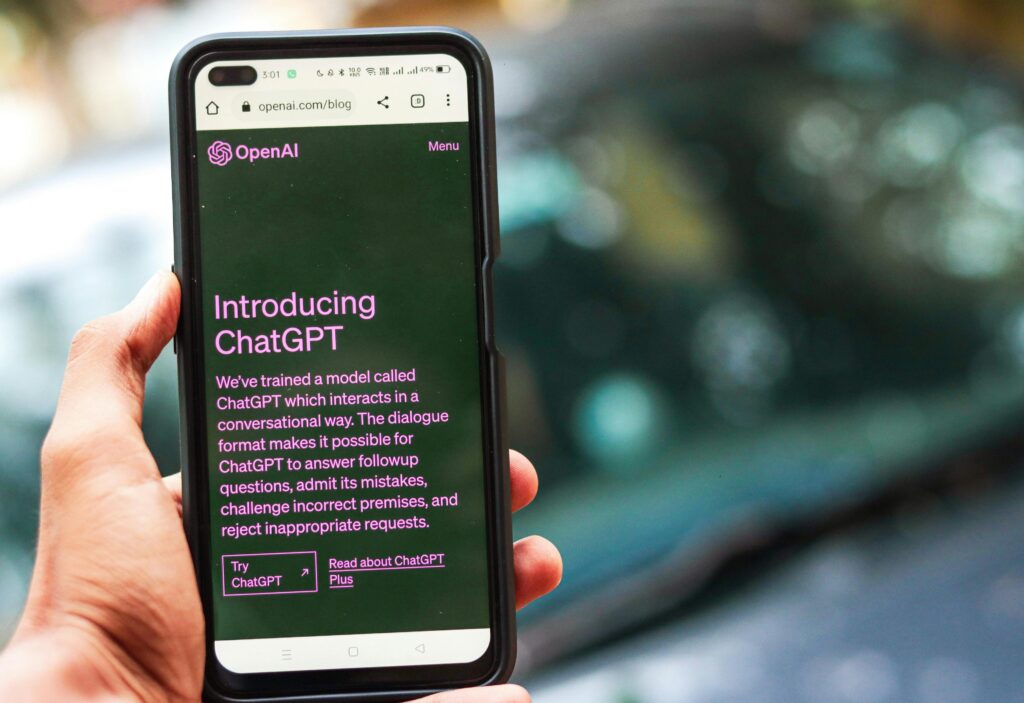In the world of artificial intelligence, getting the most out of tools like ChatGPT largely depends on how we phrase our requests. Did you know there are specific prompt structures that can improve the quality of ChatGPT’s responses and help you unlock its full potential? Below, we explore some of the most effective prompting frameworks you can use to interact more efficiently with ChatGPT.
1. R-T-F: Role, Task, and Format
This is one of the simplest yet most powerful prompt frameworks. In this approach, you tell ChatGPT exactly what role to take on, what task to perform, and what format the response should follow.
- Role: Define the role ChatGPT should play—such as a marketing expert, legal advisor, or creative writer.
- Task: Specify what you want it to do, e.g., “write a value proposition” or “perform a market analysis.”
- Format: Indicate the type of response you expect—whether it’s a list, paragraph, or outline.
Example Prompt:
“Act as a digital marketing expert, create a strategy for a new social media ad campaign, and present it as a list.”
By understanding and using this type of prompt, you can get more accurate and detailed responses from ChatGPT, making it easier to make well-informed business decisions.
2. T-A-G: Task, Action, and Goal
This framework focuses on clearly defining the purpose of your request. It’s structured around the task at hand, the specific action ChatGPT should take, and the ultimate goal you wish to achieve.
- Task: Clearly state what you want to accomplish.
- Action: Specify the concrete actions ChatGPT should take to fulfill the task.
- Goal: Define the final objective you want to reach.
Example Prompt:
“Define the task of writing blog content, outline how the content should be structured, and set the goal as increasing web traffic.”
Using these prompts correctly allows you to guide ChatGPT to help you more effectively achieve your personal or business goals.

3. B-A-B: Before, After, and Bridge
This framework is designed to establish a cause-and-effect relationship, which is great for structuring problems and solutions. It helps define the initial situation, the desired outcome, and the strategy to connect the two.
- Before: Explain the initial problem or situation.
- After: State the expected result after taking action.
- Bridge: Describe how you’ll go from the initial situation to the desired outcome.
Example Prompt:
“Before, users couldn’t find the necessary information on our website. After implementing a new navigation structure, the conversion rate is expected to increase. The bridge is redesigning the site layout and offering relevant content in an accessible way.”
This type of prompt allows ChatGPT to offer solutions based on past and future scenarios, helping build more effective strategies.
4. C-A-R-E: Context, Action, Result, and Example
This framework is ideal when you want a detailed analysis. It not only defines what you need to do, but also provides context and specific examples to generate a thorough response.
- Context: Provide the background for the task or problem.
- Action: Describe the specific actions to be taken.
- Result: Explain the expected outcome.
- Example: Give examples to better illustrate the request.
Example Prompt:
“Provide context on how privacy policy changes affect user retention, describe the action of implementing a transparent process, clarify that the expected result is increased user trust, and give examples of companies that have succeeded with such policies.”
This type of prompt provides a more complete structure, helping ChatGPT better understand your needs and deliver responses that are more aligned with your expectations.
Conclusion
Prompting frameworks are incredibly powerful tools for maximizing your results with ChatGPT. Whether you need a clear task structure, a connection between problems and solutions, or a fully detailed response, these prompts will help you get more precise and valuable answers. Try these approaches and see how you can improve the quality of your interactions with ChatGPT, unlocking its full potential in all your projects.
If you’re interested in learning more about how AI tools like ChatGPT can enhance your decision-making and transform your business, we invite you to explore ENEB’s Master in AI for Business This program is designed to prepare future business leaders to manage change and lead innovation in the digital era.
Additionally, to deepen your knowledge, we recommend staying up to date with the latest updates from ChatGPT and other AI tools to better understand their impact on business.

